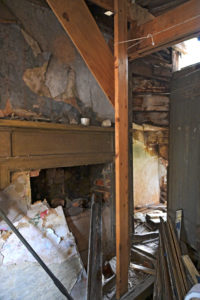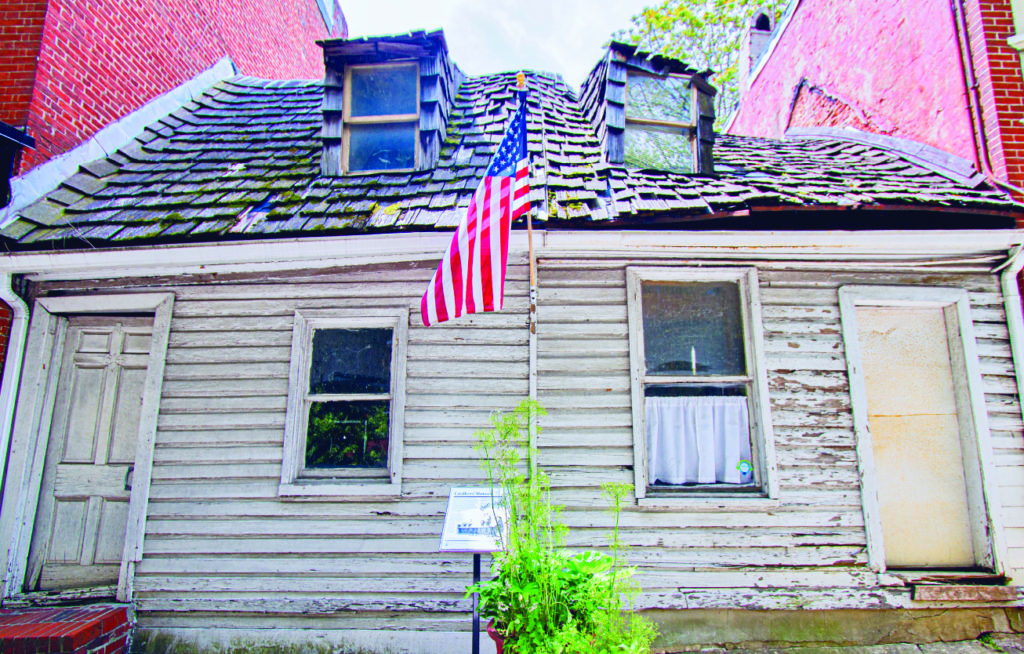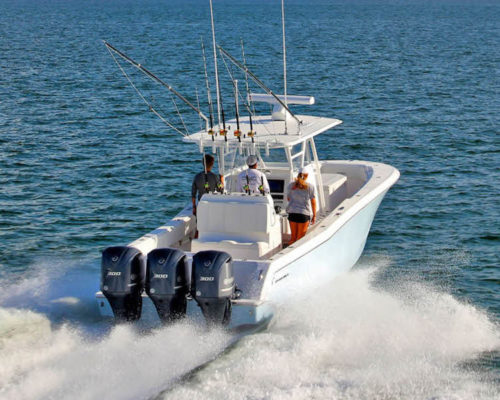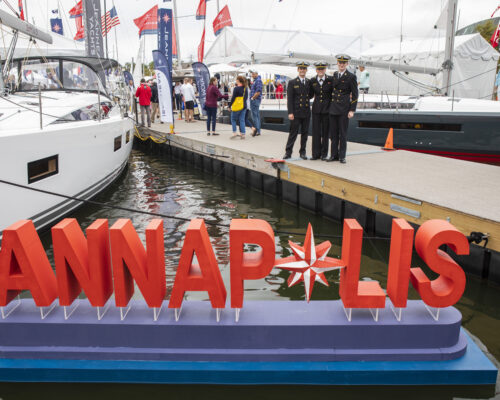Saving the Caulkers’ Houses of Fells Point, an important piece of Black maritime history
by Brennen Jensen
The most astounding thing about the pair of diminutive, conjoined houses in Baltimore’s waterside Fells Point neighborhood is their existence.
The frame construction and wood-shingle roofs of 612 and 614 S. Wolfe Street mark them as 18th-century edifices. (Fearful of fires, the building of wooden houses was banned in the city center after 1799.) So, over literally centuries, these two could have burned down or been pushed over to make way for the sturdier brick rowhouses now dominating the environs.
They are improbably small. Each house has a single ground-floor window and a lone dormer protruding from a half-story garret, with about 500 square feet of living space. They’re believed to have been erected as rental properties, circa 1797. That’s the year Baltimore Town made the civic bump to Baltimore City and the frigate USS Constellation was built on the nearby waterfront. Their wooden walls echoed the sounds of Fort McHenry’s bombardment during the Battle of Baltimore.
The pair have a deep relationship to the waterfront just a couple of blocks south, but at present their main maritime connection appears to be their elements-battered rooflines, bent and undulating like the storm-tossed ocean. They’re in pretty rough shape. Last thought to have been occupied in the 1980s, they endured a stretch of abandonment until the Society for the Preservation of Federal Hill and Fell’s Point acquired them in 2005. This nonprofit group patched them up over the years, with efforts to fully stabilize the battered properties launched last summer. Indeed, when I visited them in October they were encased behind construction fencing and signage, reading, “The Ships Caulkers’ Houses: Little Houses. Big Story.”
They’ve had various names over the years, including the Two Sisters Houses, named after the siblings who owned them while fighting off a disastrous 1960s plan to send a highway through Fells Point. The current name goes back a century earlier, to the 1840s and 1850s when they were inhabited by free Black ship caulkers. These shipyard workers engaged in the messy, taxing, but utterly crucial task of caulking wooden ships to make them watertight. The process involves driving fibrous strands into a hull’s seams and sealing them with hot pitch. Author, orator, and abolitionist Frederick Douglass was an enslaved caulker in Fells Point before fleeing north to freedom in 1838.
“The ‘big story’ is what the ship caulkers were able to create for themselves,” says architectural historian and Preservation Society board member Sarah Groesbeck, whom I arranged to meet by the houses. “The story of enslaved people is important to tell, of course, but you don’t always hear as much about free Black people in Baltimore and the unique and special community they created—their schools, churches, and an early form of unionization. All the things that other people had through government or society, they had to create on their own.”
That the houses are little doesn’t mean restoring them to their original appearance isn’t an enormous undertaking. Termites have eaten them, water has warped them, and then there’s the need to untangle the numerous modifications and rearward additions. Through painstaking “architectural forensics,” Groesbeck says it’s now understood that the pair are actually the southern half of a onetime quadplex of houses. (Brick rowhouses replaced the northern half.) What’s more, the clapboard siding seen today is a later modification, as they were originally timber-framed houses with brickwork between the beams, not unlike Tudor houses of medieval England. Their restoration brings something unique to Baltimore’s streetscape, and historians say they’re the only example of this hoary form of domestic architecture in the Northeast.
“Right now, the goal is just to get them fully weathertight and stabilized so they won’t fall down,” Groesbeck says. This work, planned for completion before the worst of the winter weather set in, is funded by a $100,000 African American Heritage Preservation Grant from the Maryland Historical Trust. A full-scale restoration will likely cost hundreds of thousands more—money that has yet to be raised. “The vision is for them to be some form of community and educational space; not necessarily a house museum, as those are a little bit out of date,” Groesbeck says. “We see a place where school groups and others can come and learn about the Black ship caulkers, as well as early construction methods.”
As a byproduct of its location—as the northernmost Southern city, and southernmost Northern one—antebellum Baltimore was home to more free Blacks than any other municipality. By the start of the Civil War, the city had nearly 26,000 free Black residents versus just over 2,000 who were enslaved.
While spared the yoke of bondage, free Blacks lived a tenuous and vulnerable existence—subject to a shifting panoply of laws restricting their right to assemble, be educated (public schools were closed to them), and acquire firearms, alcohol, and even dogs. Unable to vote, they had zero political clout. Barred from testifying in court, the “justice” system was of little use. Free Blacks accused of unpaid debts, vagrancy, or other infractions real or imagined could be punished with “terms of servitude”—in other words, a return to enslavement.
But for at least part of the antebellum period, enslaved Blacks, free Blacks, and whites largely worked together in Fells Point’s bustling shipyards, birthplace of the sleek Baltimore Clippers. Talbot County-born Frederick Douglass witnessed this cohesion shortly after arriving in town in 1836 for his second (and final) period of urban bondage. Still a teenager, he was hired on as an apprentice caulker, learning a trade while handing over his wages to a white master. “White and black ship carpenters worked side-by-side and no one seemed to see any impropriety,” Douglass wrote in his autobiography. “All hands seemed well satisfied. Many of the black carpenters were free men.”
As it happened, this biracial cooperation was short-lived. Pressured by the swelling ranks of working-class white immigrants, white ship carpenters suddenly refused to work with their Black counterparts. A hapless Douglass, though tangential to the fray, was savagely beaten amidst the violence that consumed the shipyards. In the end, whites forcefully took control of all the skilled maritime trades, save ship caulking. Here, Blacks dug in their heels, creating the first African American union/mutual aid society, the Caulker’s Association, to give them collective bargaining power at the shipyards.
Around this same time, and with the same do-it-yourself spirit, the Black caulkers formed the East Baltimore Mental Improvement Society. This self-help educational group met in private homes to improve reading, writing, and mathematical skills, and hold debates and discussions around philosophical and religious topics. And this brings the story up to when census data and city directories show that the Black caulkers began renting the Wolfe Street houses—tenants such as the Offer family: John, Jane and their four children; and the Joneses: Richard, Rebecca, and their four youngsters.

Curiously, the caulkers’ trail now leads well away from the water, to an erstwhile catering hall in the Northeast Baltimore neighborhood of Overlea. This is the home of the Natural History Society of Maryland, where husband-and-wife archeologists, Jason Shellenhamer and Lisa Kraus, are curators. They also run a nonprofit archaeology organization that performed a series of volunteer digs at the Caulkers’ Houses, unearthing more than 10,000 artifacts from the postage-stamp backyards where numerous privies once stood. (They continue to monitor the ongoing stabilization efforts as the work uncovers layers of history in and around the houses.)
A sampling of what they found spills out across a folding table: pieces of pottery and dishware, a spoon, broken clay pipes, some marbles, a thimble, and other artifacts of domestic life from over 180 years ago. In a way, it’s extraordinary in its very ordinariness. “It looks strikingly similar to what’s been found in working-class Fells Point sites associated with white families,” Lisa Kraus says. “While that might seem insignificant, it speaks to the earning power of the African American caulkers, which they fought for and were savvy about maintaining in the middle of the 19th century.”
What is unusual is the hoard of writing slates and slate pencils uncovered. These small slate rectangles could be written on with a pencil-like slate stylus, like a primitive handheld chalkboard. While their backs are not stamped “Property of East Baltimore Mental Improvement,” it seems probable that these might have been used by the group, perhaps even by Douglass himself.
“We found so many of them, and we know from Frederick Douglass and other sources that the East Baltimore Mental Improvement Association was really active during their time of the Caulkers’ Association, and that it was something that was happening inside people’s households,” Kraus says. “The number of writing slates and pencils that we found in this tiny space is comparable to what a 19th-century school might have.”
Alas, the Black caulkers’ hold on their industry was not to last. Previously, the swelling numbers of white immigrant laborers pushed free Blacks from the waterfront, but the demise of the Black caulkers was likely an opportunist power grab by whites who hated immigrants, the Know-Nothings.
Following national trends, nativist secret societies began forming in Baltimore in the early 1850s, their members viscerally hostile to immigrants and Catholics. When outsiders asked about their activities, participants had a stock reply: “I Know Nothing.” This refrain became a name for the political party that grew from the movement, also referred to as the American Party.
Today’s bruising political battles over ballot access and voting rights pale before the literally bruising and bloody battles the Know-Nothings brought to elections, when violent gangs—with names such as Plug Uglies, Blood Tubs, and Rip Raps—attacked immigrant voters and political rivals in the streets. Know-Nothings soon infiltrated city government and the police. (Baltimore even had a pair of Know-Nothing mayors between 1854 and 1860.) Against this corrupt backdrop, a Know-Nothing gang calling themselves the Tigers set their eyes on the Black caulkers and their well-paying jobs. Thus began what have been called the Caulkers’ Riots.
In the end, through fisticuffs and a look-the-other-way police force, the Tigers and their allies took over the caulking jobs—despite being horrible at the craft. “The Tigers who physically bludgeoned their way into caulking the boat Virginia did such an appallingly bad job, it came back within two months because of leaking,” Kraus says.
By the time the Civil War’s first blood was spilled in Baltimore, the Black caulkers had left Wolfe Street. But Black maritime craftsmen had one more gambit to maintain a foothold on the waterfront, their boldest and most ambitious of all. What to do when white-owned shipyards refuse to hire Black workers? Open a Black-owned shipyard.
A short walk from the Caulkers’ Houses brings you to Frederick Douglass-Isaac Myers Maritime Park. Run by the Living Classrooms Foundation, it includes a museum within an 1840s warehouse. It was closed because of COVID-19, but I arranged with Julia Muller, the Foundation’s education coordinator, for a quick walk-through. Myers was a free-born Black ship’s-caulker-turned-labor leader who helped found the Chesapeake Marine Railway and Dry Dock Company in 1866, a shipyard that ultimately employed hundreds of Black caulkers (and some white ones). The museum’s exhibits track the doings of both its namesake men, including Douglass’s train trip to freedom disguised as a sailor and wielding borrowed seaman’s papers.
When the caulkers’ houses are restored, a more complete picture of their unique Fells Point history will emerge. “Did you know many of the free Blacks used their earnings to buy the freedom of their relatives?” Muller asks after I meet her by the large metal sculpture of Douglass’ leonine head that sits on a plaza overlooking a working boatyard. “And that’s another way they were able to create such a big community. If your cousin or brother or other relation is enslaved, you buy their freedom and have them come live with you and work as a caulker.”
Muller says she hopes to erect signage on the “Trail of Tears” featuring a map of area slave pens where the enslaved men and women were corralled before being marched in shackles through Fells Point for southbound ships. Meanwhile, much of the existing Douglass-related interpretive signage around the waterfront is weathered to near illegibility and the Douglass-Myers Museum exhibits could use tweaking. There is work to be done on this end of the story as well.
But when the Black maritime story is effectively and fully told (and COVID safety measures are, themselves, history), Fells Point should emerge as a compelling destination for African American history and tourism. “Too often now,” Muller says, “people come here to pose for a photo by the Douglass sculpture, then just leave.”




